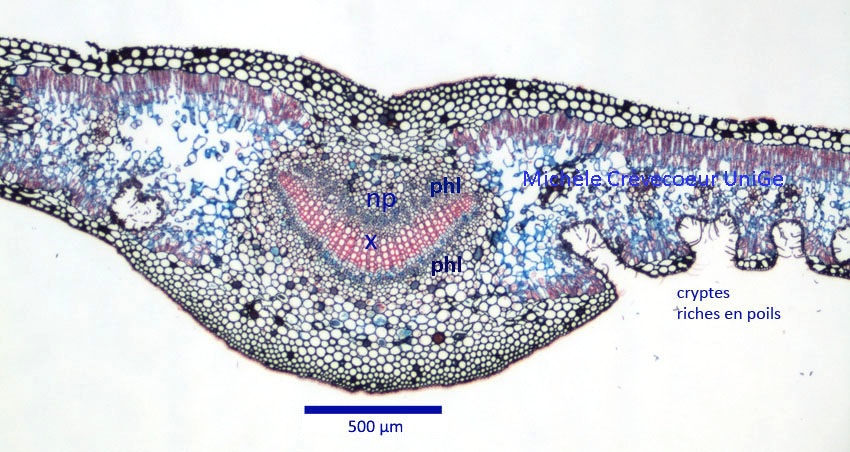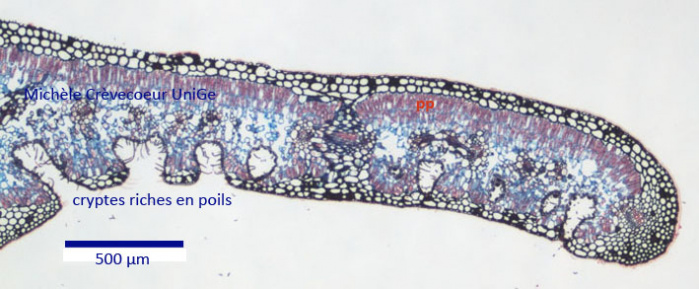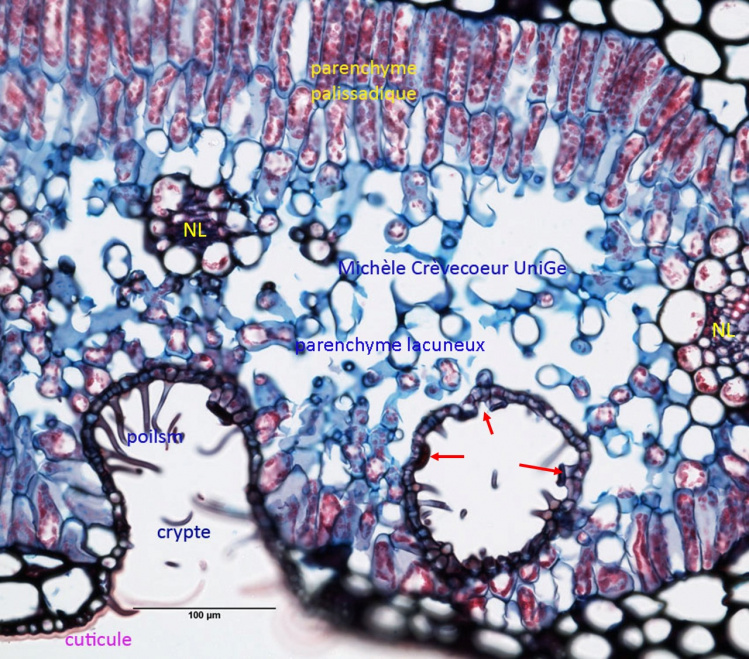Cross section in a leaf of Nerium oleander.
Nerium oleander known as nerium is an evergreen, perennial shrub or small tree in Apocynaceae family. Its is native to the Mediterranean region, Iran, the Indian subcontinent, and also southern China. It is cultivated worldwide as ornamental and landscaping plant and it is a highly plant. The leaves are lanceolate, narrows at both extremities.
Nerium oleander belongs to xerophytes, plants that grow in conditions in which water availability is low or extremely reduced, that is a dry environment. In xerophytes it belongs to sclérophytes whose strategy is to fight against water loss by evapotranspiraion with morphological and anatomical adaptations.
On this page we show micrographs of paraffin section (8 μm thick) stained with safranin and alcian blue: cellulosic walls are stained blue; lignified walls and cuticle are stained pink to red. Chloroplasts in parenchyma appear as red globules.
Part of the section with the main vein (np) with superposition of xylem (x) and phloem (phl) on both sides of xylem.

Below: part of the section with lateral veins and the numerous crypts on the abaxial face.
The mesophyll is heterogeneous with two layers of palisade parenchyma (pp) toward adaxial face and spongy parenchyma toward abaxial face.
Detail of two crypts on the abaxial face of the leaf.
In cells of palisade parenchyma chloroplasts are numerous. Red arrows indicate stomata of abaxial face protected in crypts in which numerous hairs are present. nl: lateral veins
Anatomical adaptions typical of a sclerophyte
– Crypts rich in trichomes on abaxial epidermis to maintain humidity.
– Stomata protected in the crypts to limit water loss by evapotranspiration
– Hypodermis (1 or two layers of cells) below adaxial epidermis to protect parenchyma against